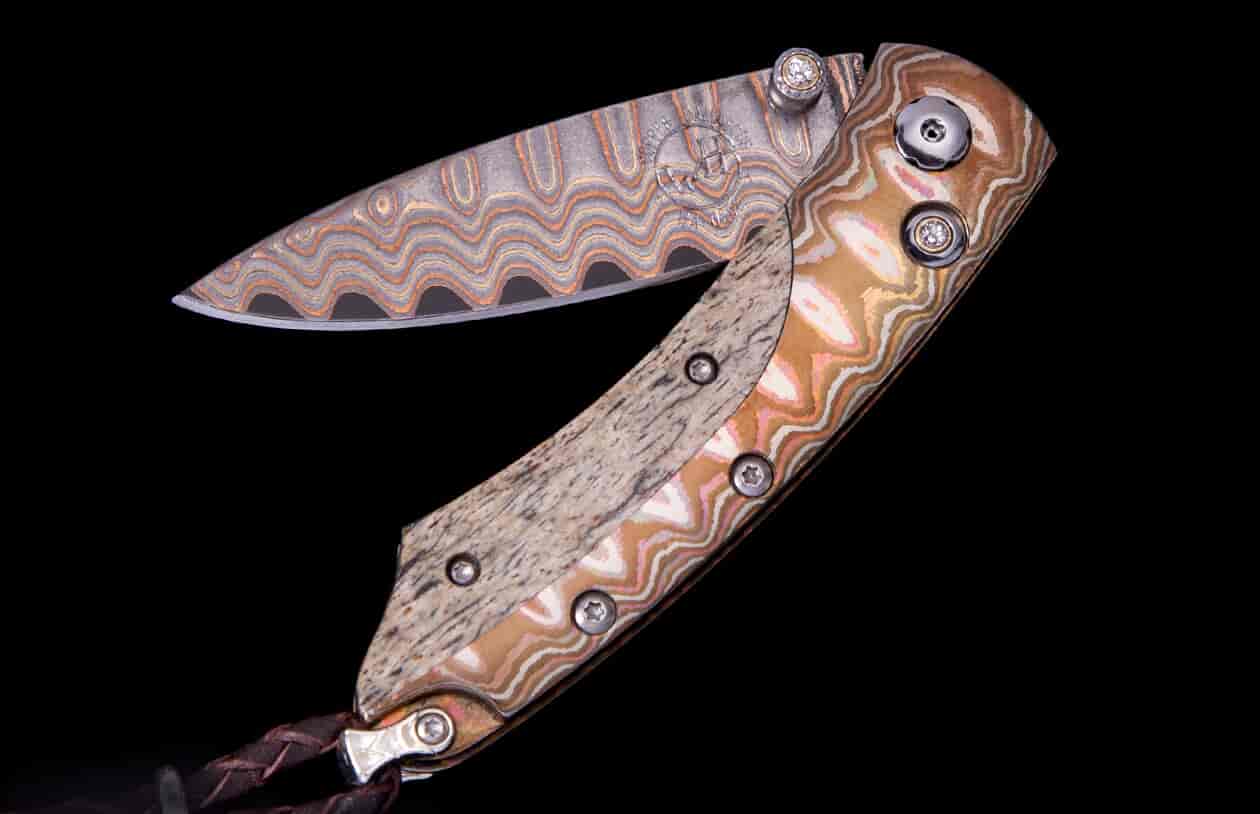Product Details
This elegant Pikatti folding knife features a frame in heat-browned 'wave' Mokume Gane inlaid with 10,000 year old fossil Woolly Mammoth bone. The blade is in William Henry's signature 'copper wave' damascus steel with an extra sharp core in VG-5 steel. The button lock and thumb stud are set with white topaz. The perfect companion for every occasion, the pikatti is the smallest of William Henry's folding knives, and the 'WMMC' also features some of the most beautiful and exotic materials of our collection.Product SKU: B04 WMMC
Features & Specs
- One-hand button lock system
- Leather carrying case
- Shipped in an elegant wood presentation box
- Dimensions:
Blade 2.00" (50.8mm)
Handle 2.63" (66.8mm)
Overall open 4.63" (117.6mm)




